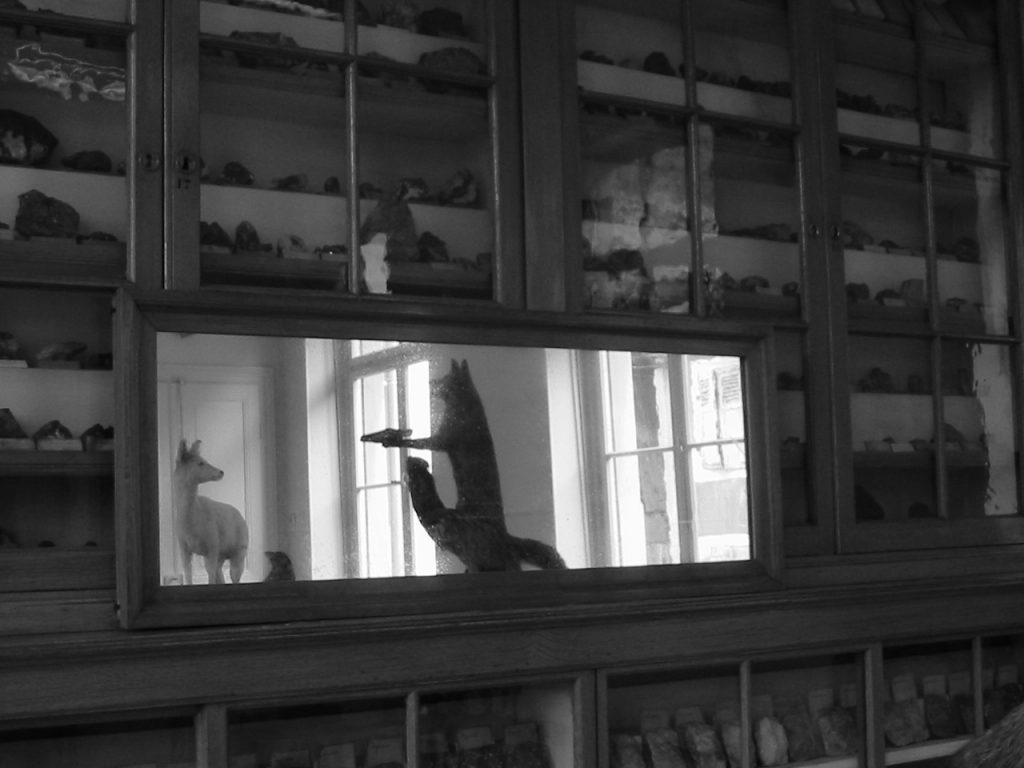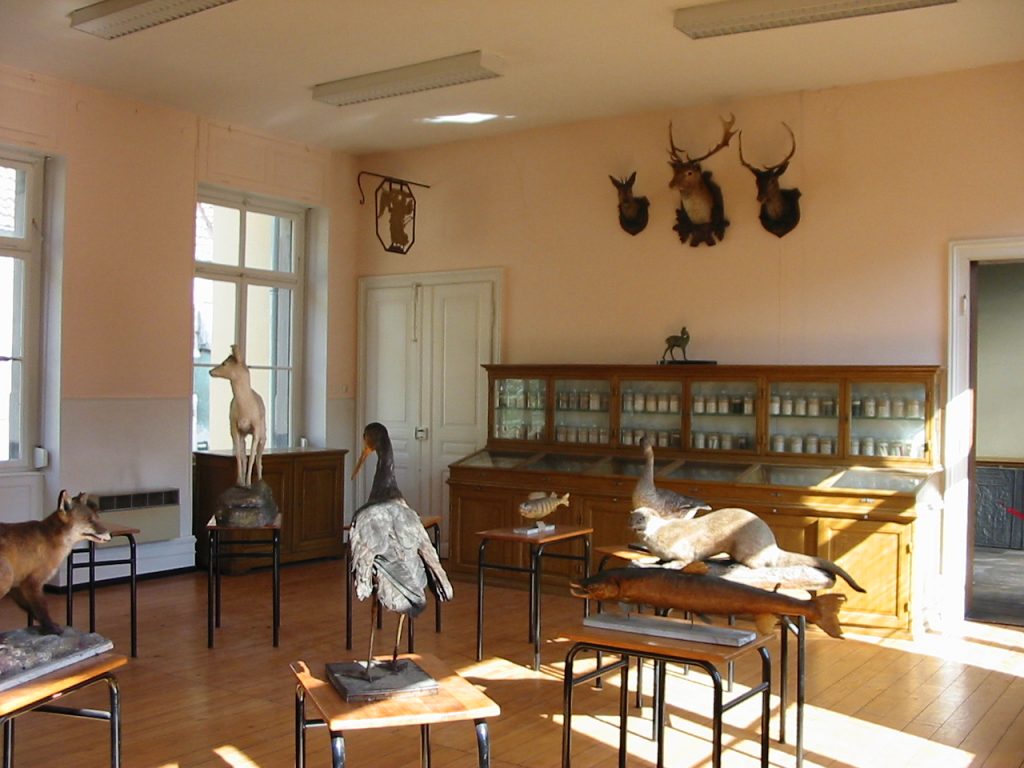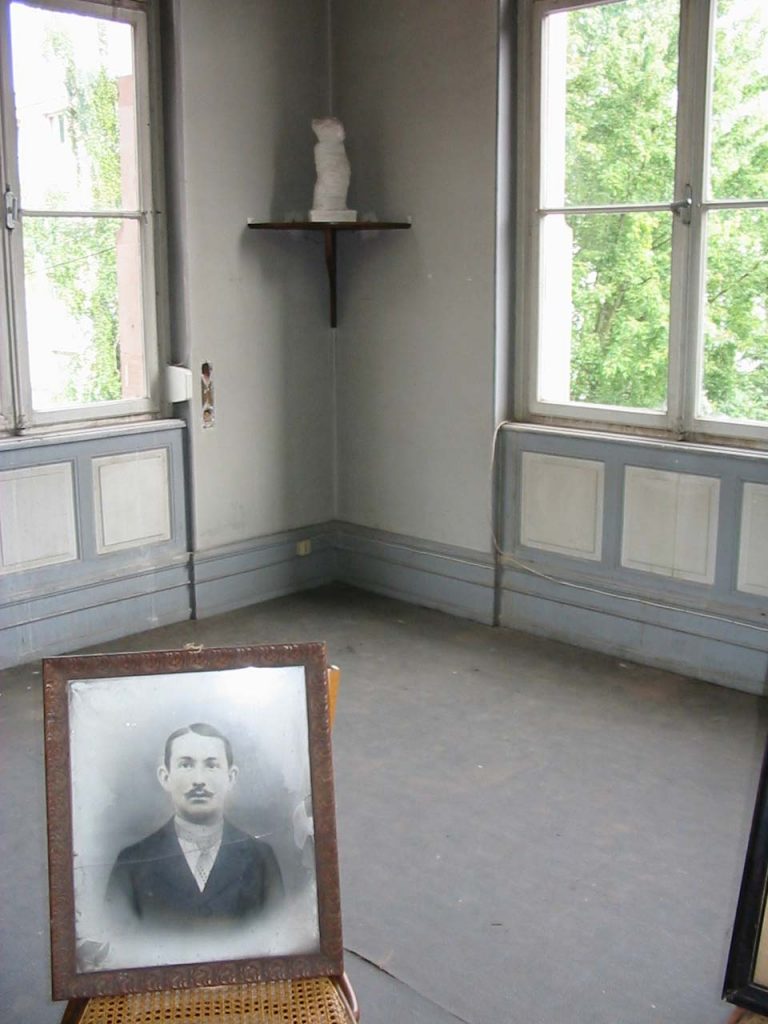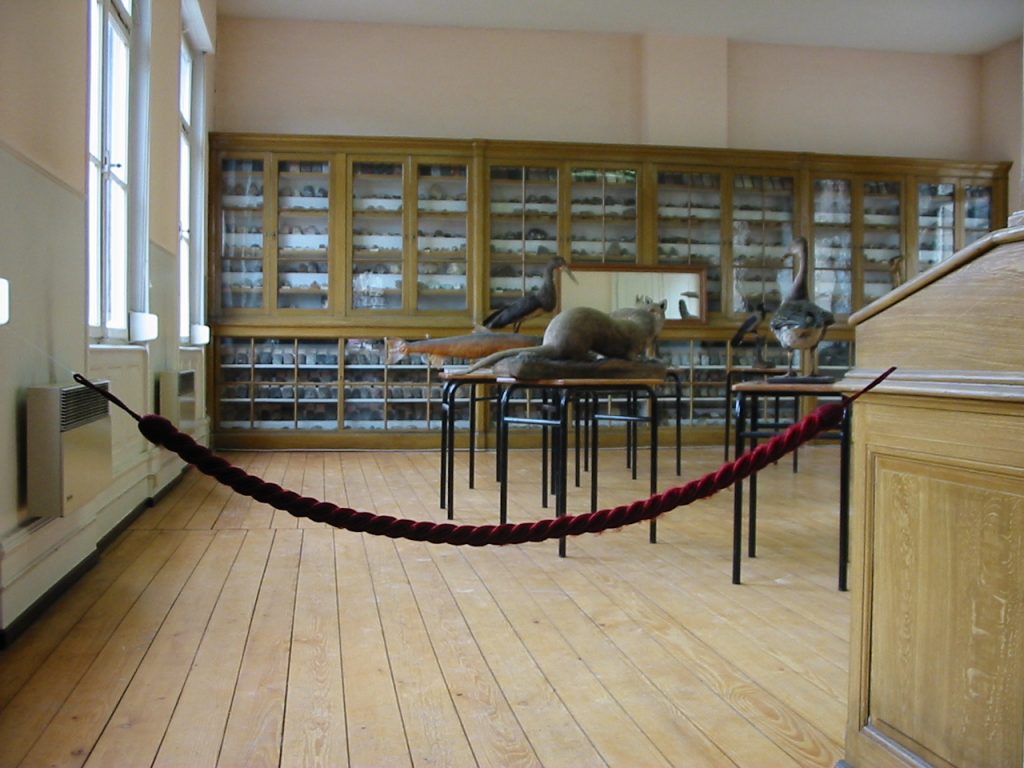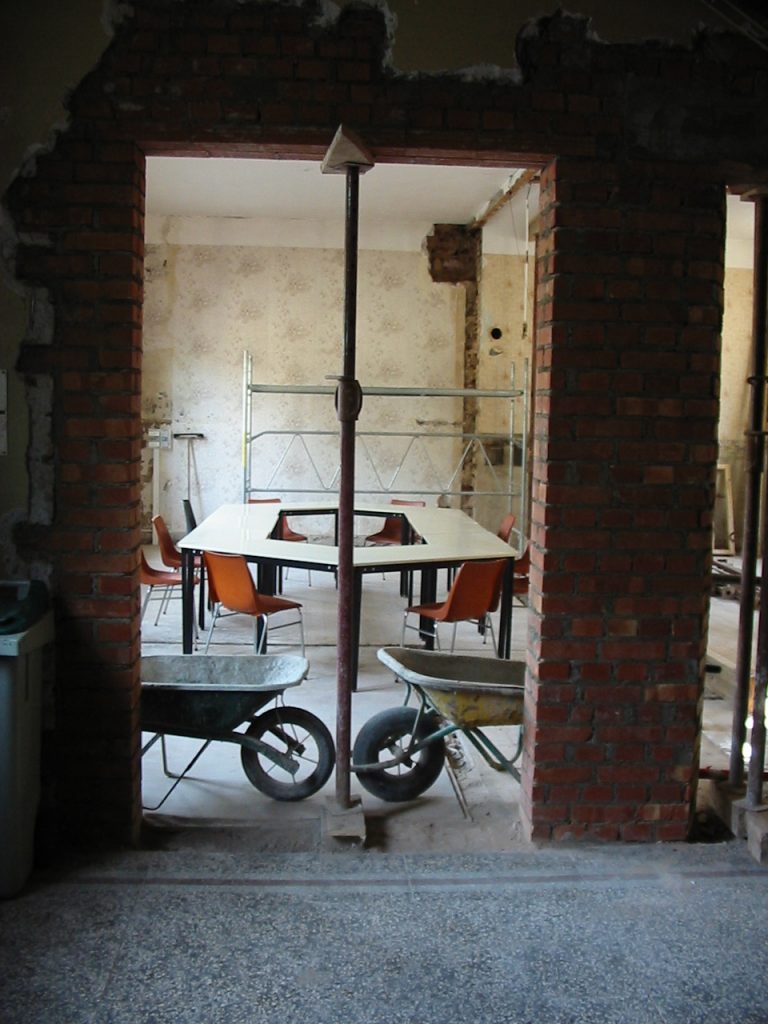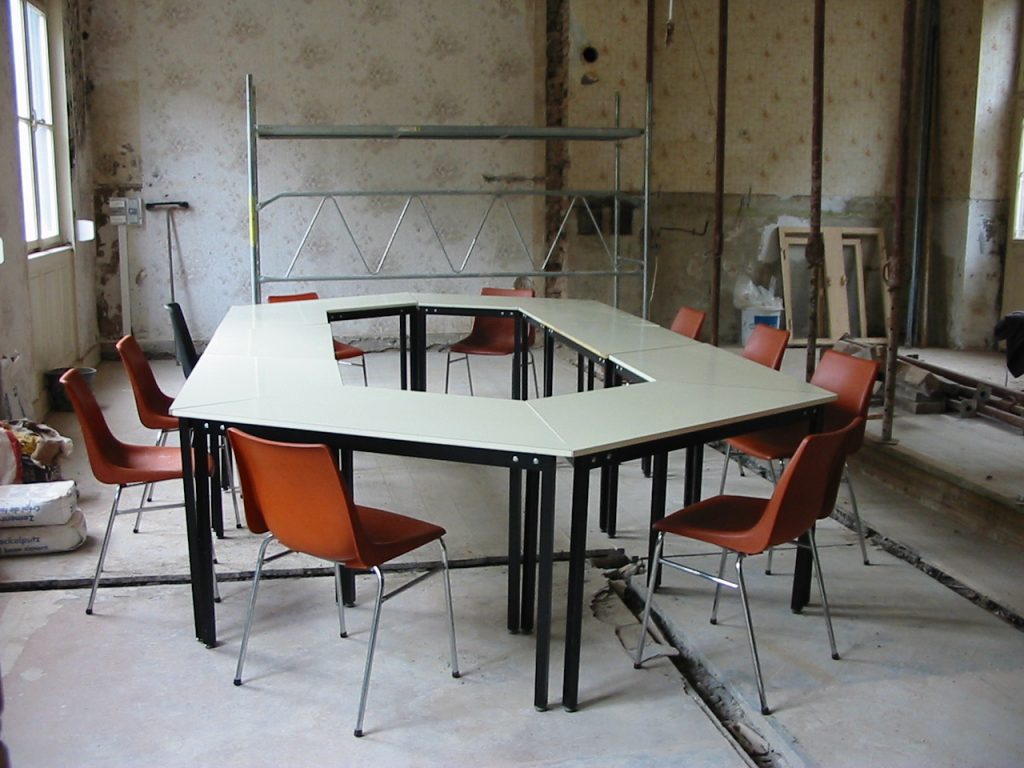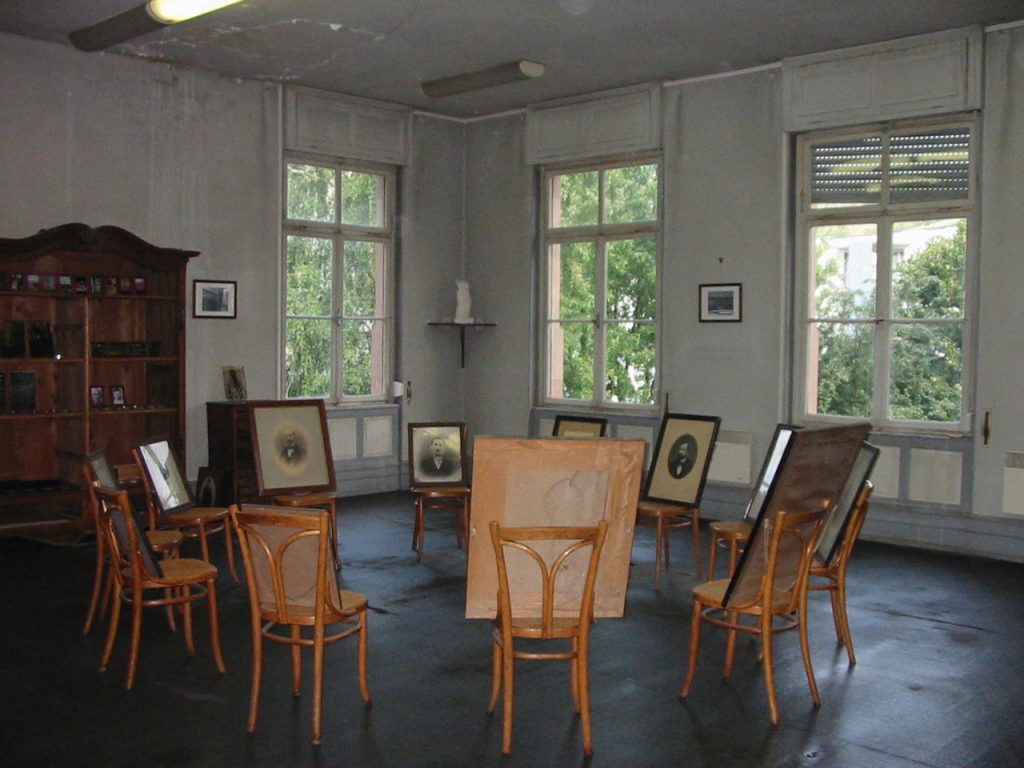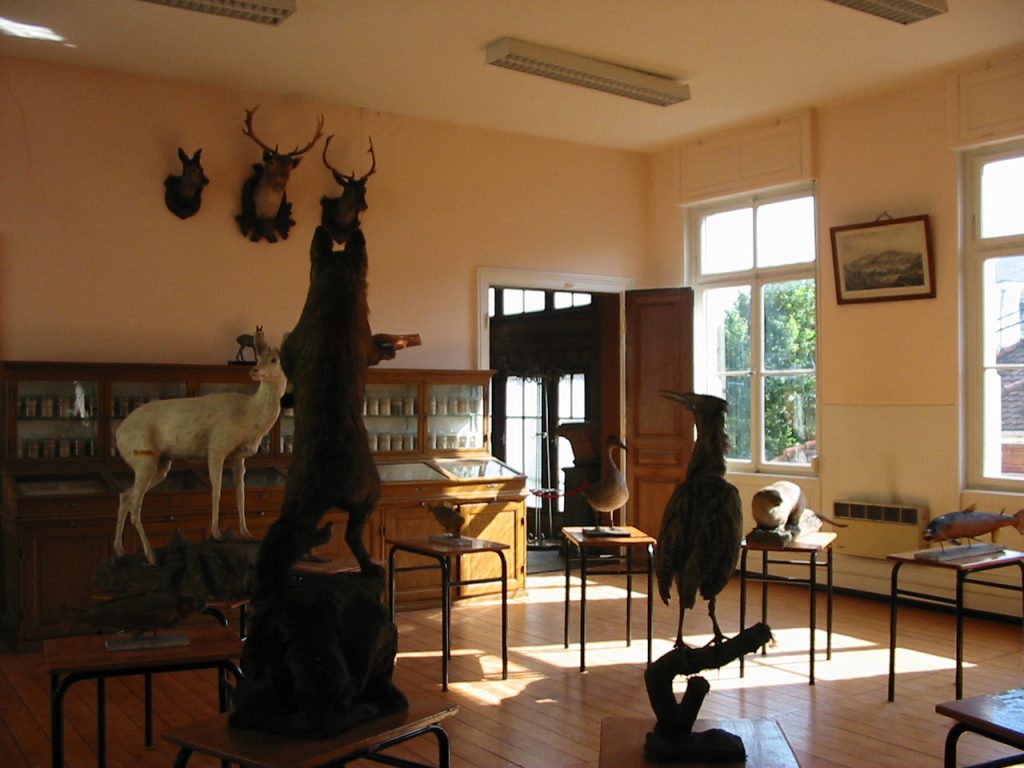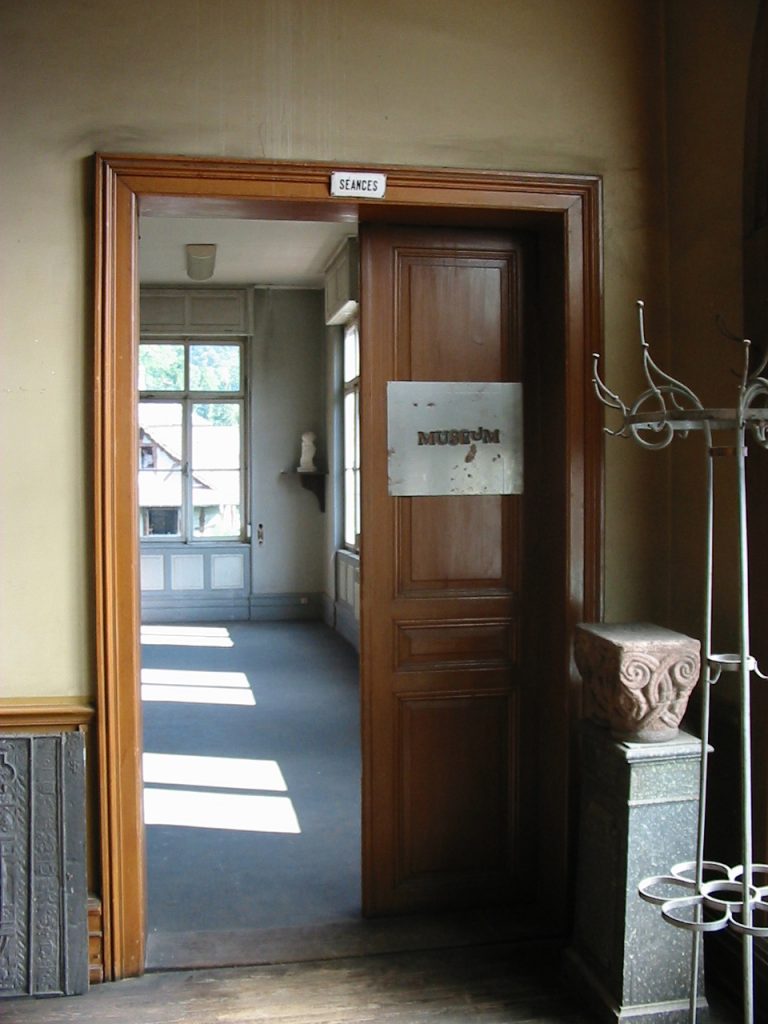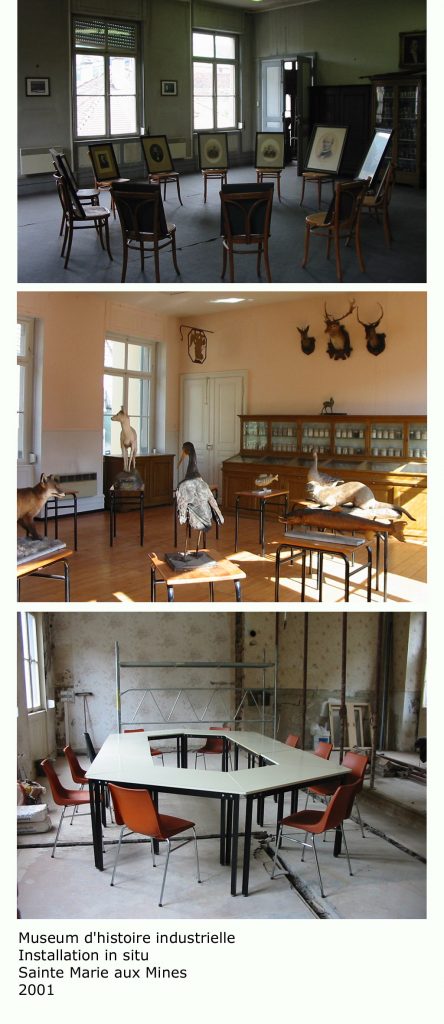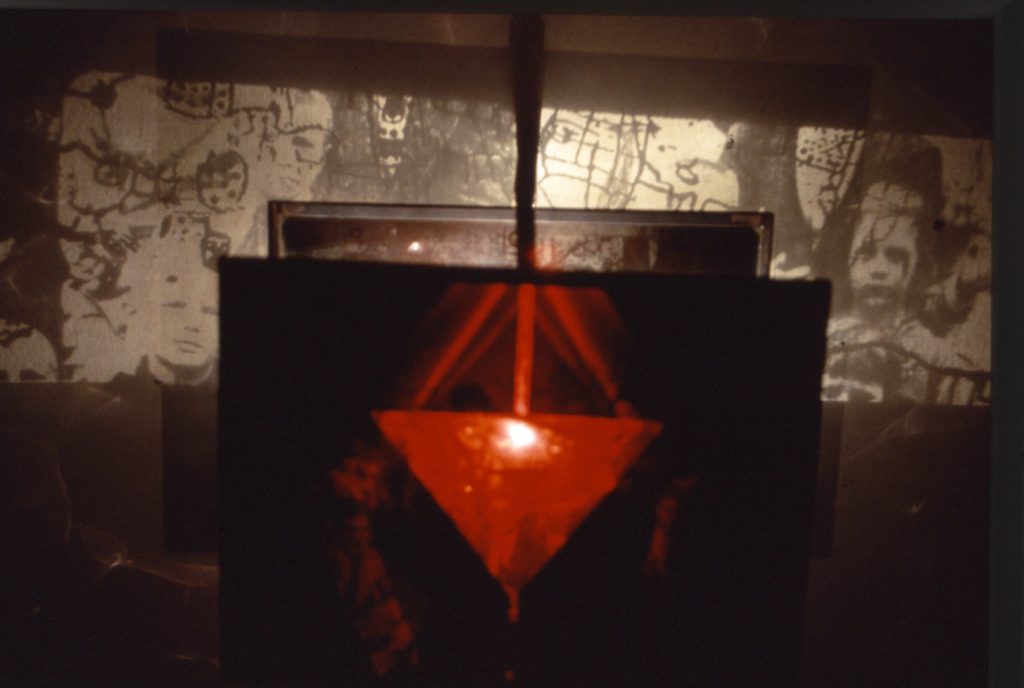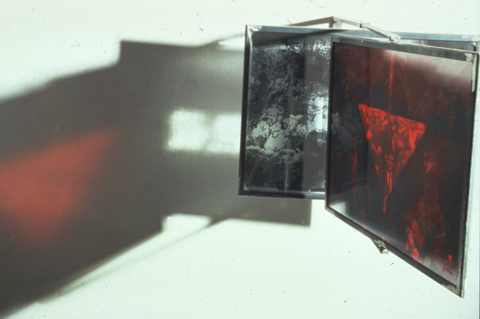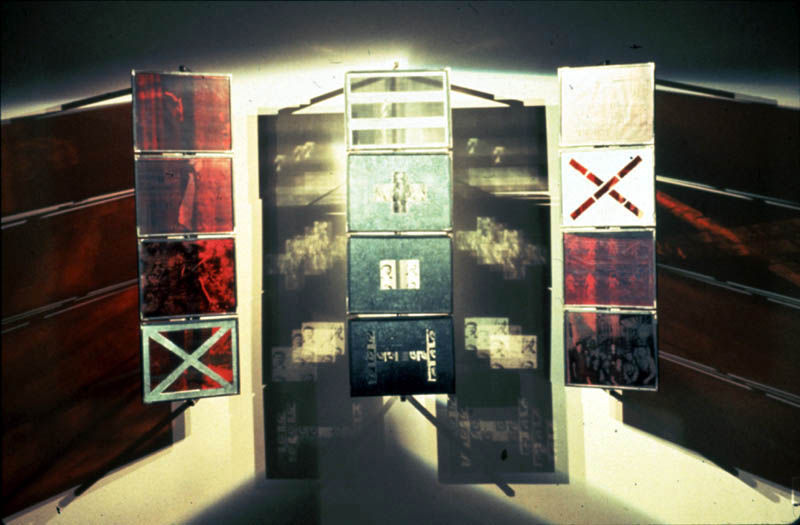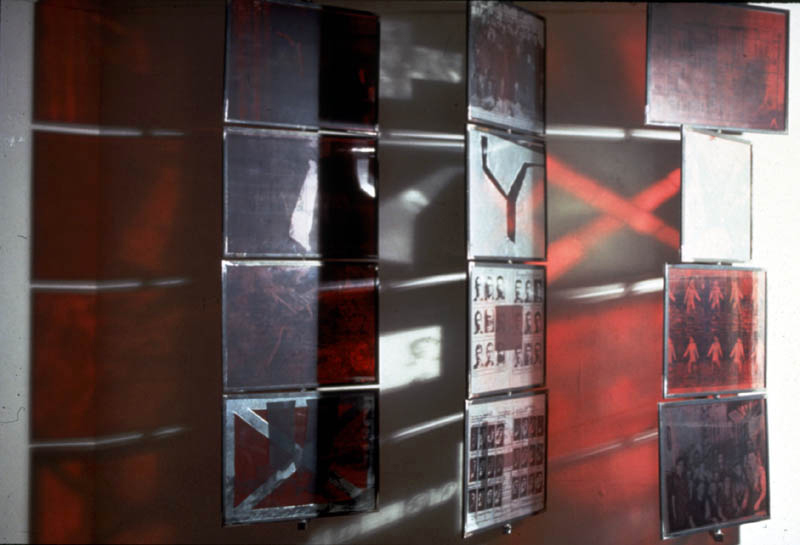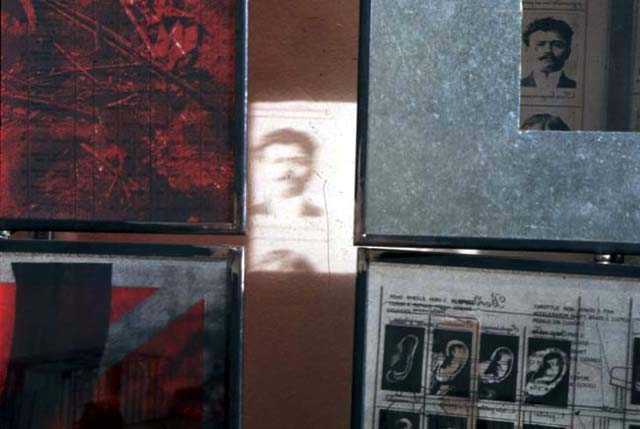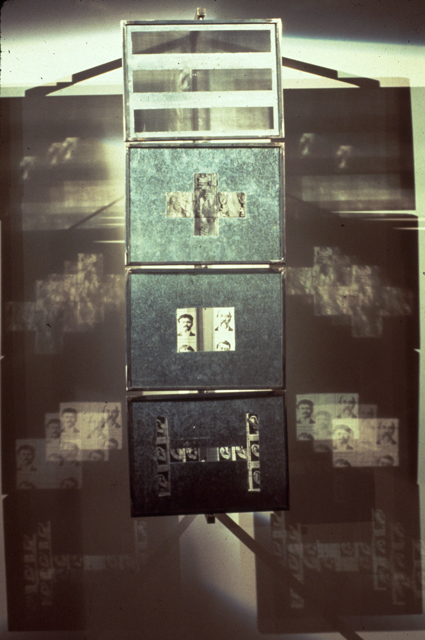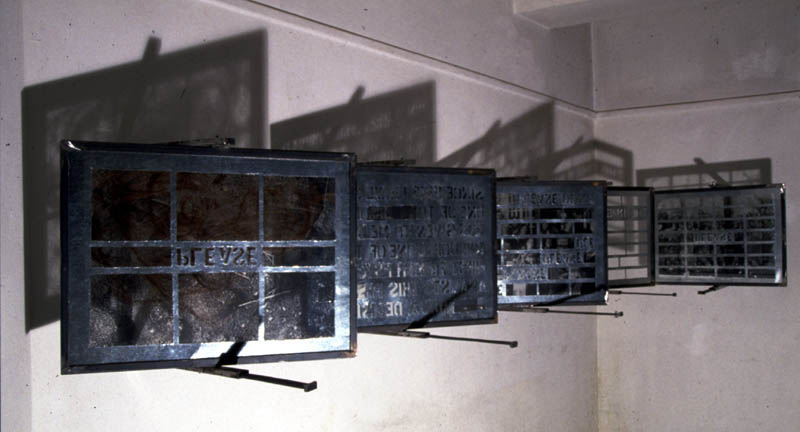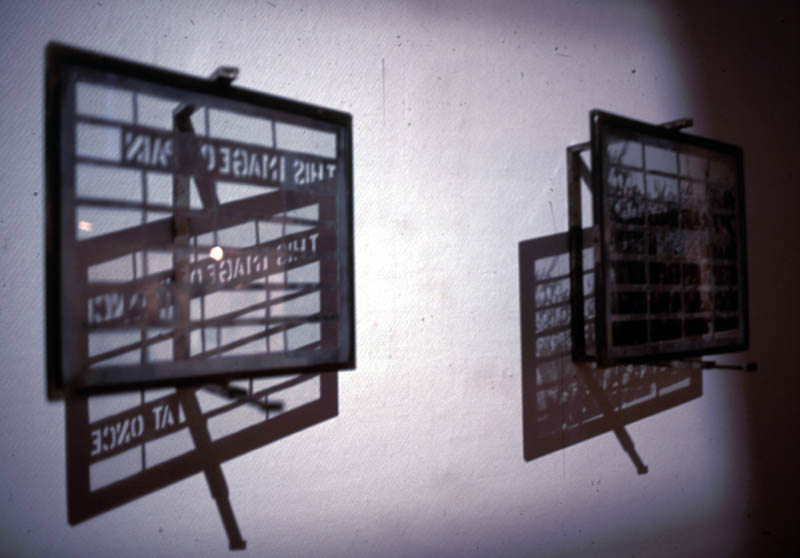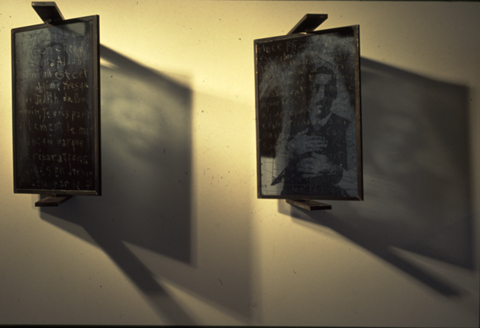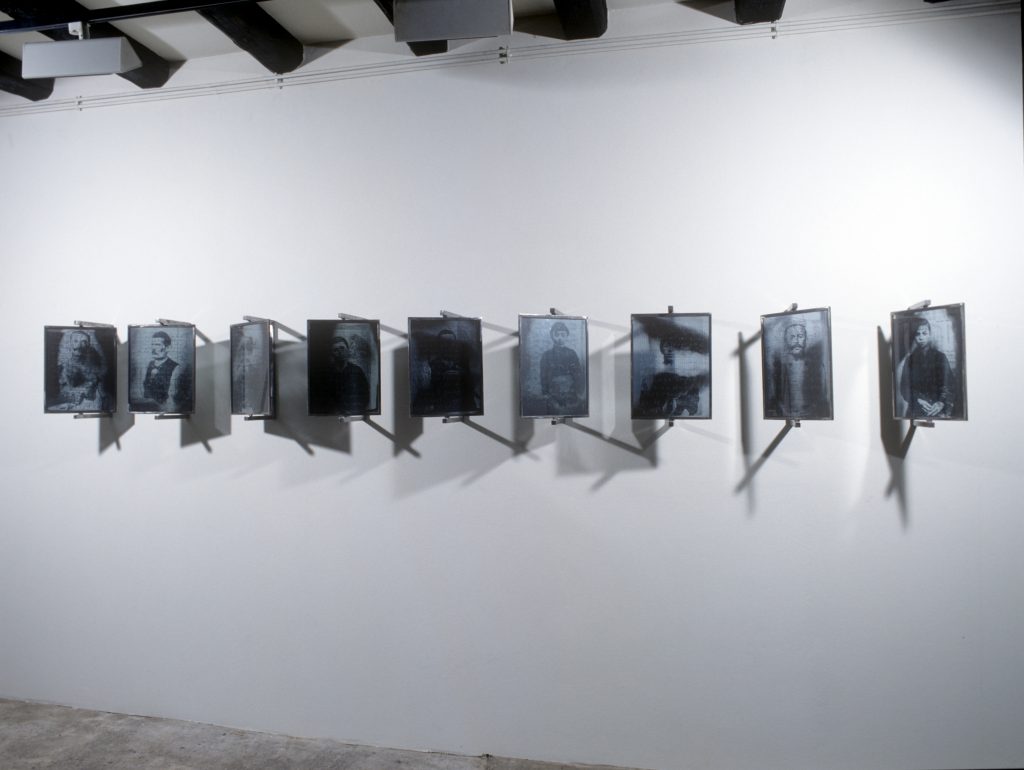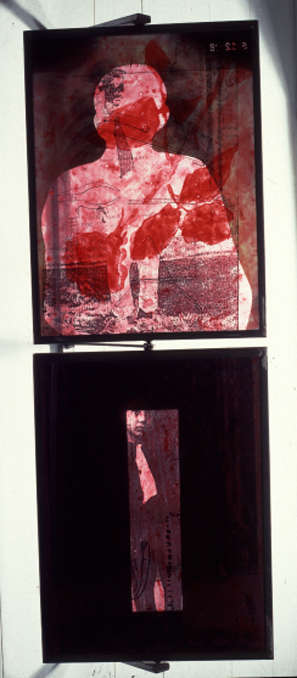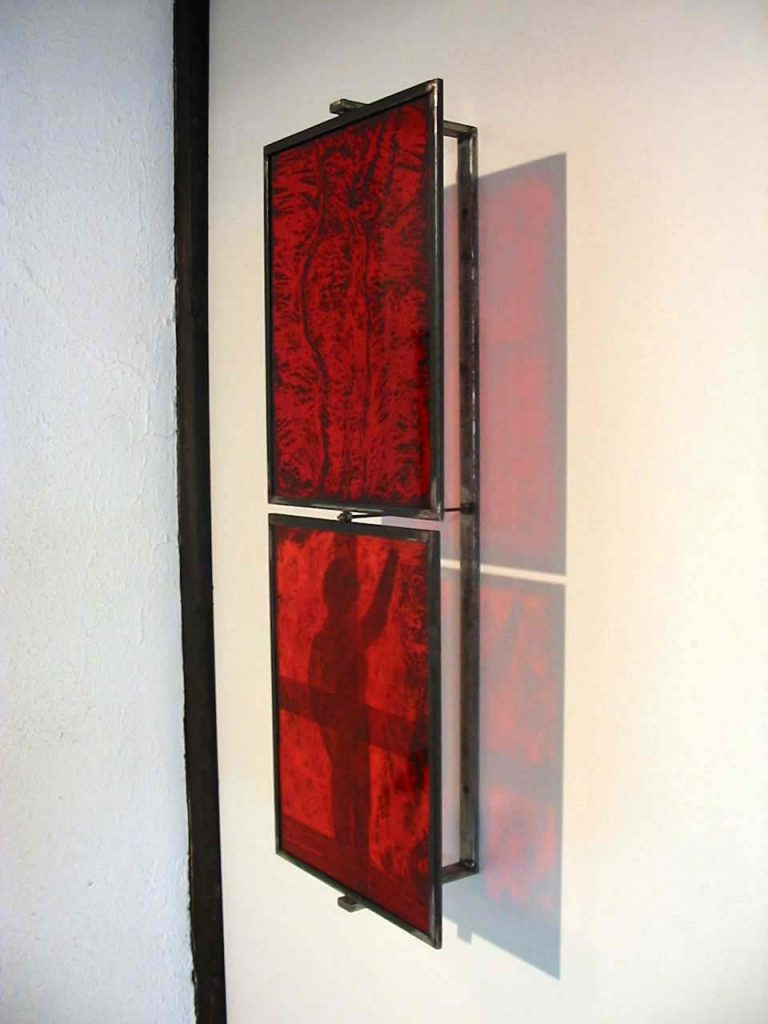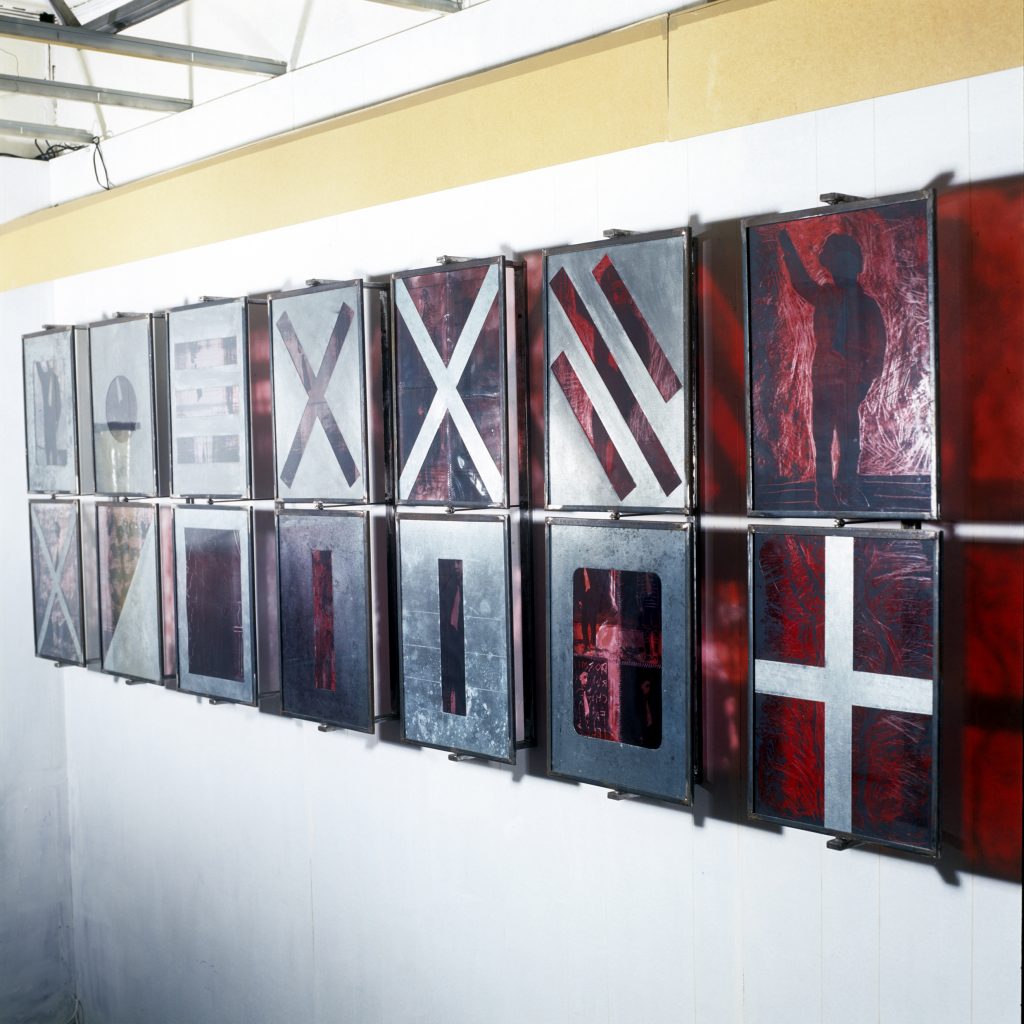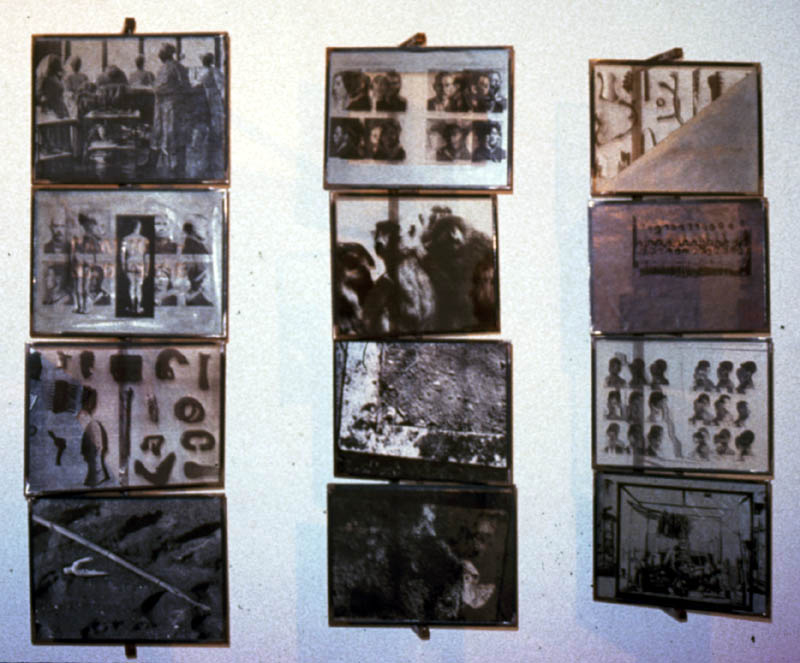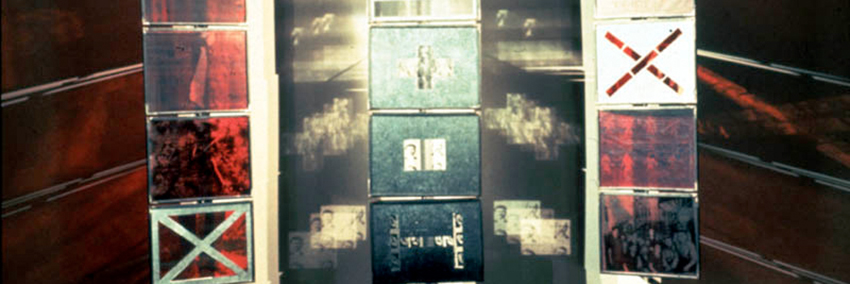I
In his last book, The drowned and the saved, Primo Levi tells how, in occasion of the German edition of If this is a man, he had to face a problem regarding its translation.
Gounan, a French Jew of Polish origin, addressed Kraus, an Hungarian, with an expression that sounded strange and unacceptable to the German translator: “Langsam, du blöder Einer, langsam, verstanden?”. Primo Levi, who had written down the sentence as he thought he had heard it, after a long correspondence with the translator accepted his suggestion: “Langsam, du blöder Heini, …”, Heini being the diminutive of Heinrich.
Only twenty years later, whilst reading a book on Yiddish language, Levi found out that an expression such as: “Khamoyer du eyner!”, “Dunce you one!” existed in that language. “Mechanical memory had functioned correctly”, comments the writer.
In 1959 the Fischer Bücherei publisher had bought the copyright for the German translation of Levi’s book on Auschwitz (which first came out in 1947, although it was widely read only in the 1958 Einaudi’s edition). Levi expressed a feeling of triumph which helped him to understand “the true public” he had in mind when he wrote Se questo e`un uomo. Written in Italian and for Italian readers the book was actually addressed to “those” against whom it was aimed like a gun.
“Now the gun was loaded”, and Levi was ready to supervise closely the German publisher and his translator’s work. He demands a constant check over the editorial process and warns them not to change a single word of his original text: “I wanted to check on not merely its lexical but also its inner faithfulness ”3. It was only on receiving a long letter from the translator that he decided that he could trust him; deserting the Nazi army in September 1943, Heinz Riedt (strangely enough never mentioned by Levi) joined the Italian partisan troops and fought against his fellow-countrymen. Having settled in Berlin after the war, he made a living as a translator, because of his love for independence and because it was difficult to find a job as a deserter; as an Italianist, Riedt was an expert in Veneto dialects, the region where he had fought with the partisans. For him translating If this is a man was a way to continue his political battle4. There was no reason to be suspicious of his political opinions, but there was still the linguistic suspicion.
Levi’s German, learned first from chemical treatises and then in concentration camps, was a primitive and a brutalised language, a “degenerated jargon” which had been a mere and essential means of survival (more than once Levi tells how he owed his life to his timely intuition of the necessity of translation, when during his first days at Auschwitz, he exchanged bread for language lessons); on the other end, Riedt being “a man of letters and refined education”, ignored the linguistic peculiarities of the German spoken in the concentration camp, which only partly came from the barrack-room language.
As we already have seen, the linguistic alienation was to be found not only between different national languages but also within the same language, precisely in its varieties: besides ignoring the concentration camp variety of the Lingua Tertii Imperii, the translator also ignored a German dialect as Yiddish.
The cooperation between author and translator was long and wearing: both perfectionists, they spent months in exchanging letters with linguistic suggestions and objections.
“The pattern was general: I indicated a thesis to him, the one suggested to me by the acoustic memory to which I referred before; he presented me with an antithesis, ‘this is not good German, today’s readers would not understand it’; I retorted that ‘down there we said exactly this’; finally we arrived at the synthesis, that is, a compromise. Experience then taught me that translation and compromise are synonymous… ”5.
This statement seems to me full of Levi’s usual secular wisdom, which is likely to have saved his life. We can agree with his Hegelian schematism only if we assume the translation is a means of crossing-over, a thin bridge across two different languages. I think, all the same, that in a couple of passages Levi perhaps unconsciously leaves an open way, at least on one side, to his synthesis; he offers therefore a footbridge leading to a path that I would like to follow.
I would like to draw attention to two issues. The first one lies in the specificity of this translation: this book, written in Italian, actually ‘takes place’ in German; its primary language, so to speak, is German – moreover, the German spoken in concentration camps – a language foreign even to the German intellectuals about whom Améry speaks; only reluctantly did they succeed, if they succeeded at all, in pronouncing it6. All the same, the concept of authenticity and originality remains essential to Levi: “In a certain sense, it was not a matter of translation but rather of a restoration: his [translator’s] was, or wanted to be, a restitutio in pristinum, a retroversion to the language in which events had taken place and to which they belonged. More than a book, it should be a tape recording”7. According to Levi it had to be voice, sound, as if recording it was the fittest way to get close to the experience itself. Levi considered himself an ear-witness (remember in the page above his statement about the accuracy of his acoustic memory); but there is more here, when he says that in translation he looks for a “retroversion”, a return to the event that cannot otherwise be represented. A book becomes a paper object after many following passages, an object whose nature is too far from the event that originated it. He didn’t want his book to be a movie, neither an editing nor a sequence of images, it had to be a tape recording. It was through that method of technical reproduction that it was possible to be most faithful. When Levi talks of his own automatic memory he means it as a non-subjective instrument, almost independent from his self and surely more reliable than his own will to bear witness. The only way of representing the experience would be to reproduce it, and this is clearly impossible; not even a mechanical recording is available and there is no choice but to be the first translator – in the most accessible language, the written one – of the sounds recorded by memory.
This remind us how the need to ‘go back’ to a language in which Levi did not write contradicts the concept of translation as a process of conveying linguistic matter, a process that need a “compromise”. Levi is aware that this is not a matter of a mere conveyance, as is suggested by the Italian word traduzione, which is the word used to describe the transfer of a prisoner from one jail to another, or by tradotta, which refers to the train that carries the troops in wartime.
The second issue regarding Levi’s text to which I would like to draw attention, arises from the passage in which he quotes the letter he wrote to the German translator, in May 1960, to thank him for his work; here we find a contradiction also with the idea of “retroversion” to the original. Levi adopts another medical expression in the letter: “You understand, it is the only book I have written, and now that we are finished transplanting it into German… ”8. In “transplanting” there is everything but the parallelism of a simple linguistic conveyance. It suggests instead something related with surgery, to the graft of an alien organ in one’s body; it is impossible not to think of a transplant without imagining a traumatic and dangerous operation that always threatens rejection. This book is a “loaded gun”, of course, and Levi wants it to be an explosive for the soul of his German readers, and, significantly, through the exact reproduction of a language that used Fressen (to devour) instead of Essen (to eat), Stücke (pieces) instead of Männern (men) or Leiche (corpses). But to transplant a text that is by definition foreigner in the body of a language implies that this language will undergo a mutation, and contributes towards its transformation into something different. Here again we are distant from the idea of translation as inevitable compromise. The intruder forces the bounds of the language, although Levi declared that he was only interested in “making my voice heard to the Germans”.
The subversive side of the transplant lies precisely in the fact that, starting from unavoidable compatibilities – such as the blood group of the donor and host – it introduces a ‘specific’ human factor where certain differences no longer matter: not only those of ‘facies’, but also the most radical: race and gender. Once its immunological defences have been lowered, for example, an European male body might accept an African woman’s heart9.
To pursue the same metaphor, let’s say that compatibilities are themselves the linguistic boundaries of translatability, since they allow the intrusion of an alien organ, without being assimilated, to ‘combine’ within the hosting body, testing its limits and endangering the body itself. This is perhaps what Primo Levi’s translator has realised – an application of what Benjamin said was the task of the translator: to widen up, that is, the borders of his own language. To “restore” the language in which the things had happened, that was simply impossible: Levi’s book was not a recording, but an art work. It could be translated only into another work of art; it could be only mutated.
II
Die wahre Übersetzung ist durchscheinend. “A real translation is transparent; it does not cover the original, does not block its light, but allows the pure language, as though reinforced by its own medium, to shine upon the original all the more fully”10.
How can a translation be transparent?
As we have seen it in Primo Levi’s case, written language is, by itself, a translation. It is, therefore, the means for expressing the necessary testimony; it is a mediation that is there in order to represent the authenticity of the experience.
If transparency can be a translation’s attribute, it also belongs to the process of mediation. Transparency does not render an object visible, it allows instead its visibility. As a medium, it puts two terms into relationship. But it is not synonymous with fidelity to one of the two; it is not reproduction. On the contrary, a concept of deformation, or contamination, is always present in the idea of transparency. The transparent matter is not looked at, because it is looked through. Still, it is there, and the vision or the sensation cannot not to be modified. In computer science, the expression “transparent for the customer” indicates an operation that, while it is carried out, is unknown to him, is not made perceivable. What one sees is only the effect. Something that is looked at in transparency is something that can be only seen “transversally”.
On the other end, especially in the Anglo-Saxon languages, transparency can imply the superimposition of various elements, whether they are matters, signs, or tracings; this superimposition gives place to interlacings that are by definition modifications of matters, signs and original tracings, and a variety of elements that arrange themselves together. Understood in such a way, transparency appears therefore in contradiction with the idea of visibility. From the coexistence of disparate texts – that are, in a certain sense, mutilated and reduced to traces – emerges a new matter, initially obscure both to the sight and to its legibility. It can be said that it is in a certain ‘covering’ that the transparency discovers its possibilities. These possibilities are given, more than from a linguistically common ‘light’, from the superimpositions between the edges of the dissimilar elements. The vanishing of the margins in the interlacing of the texts, the tangling of the distinguished shapes, is what opens to a new shape.
If there is a metaphor for this concept of transparency, it is that of mixing. In music, mixing is technically the recording on a single band of elements, sounds (instrumental, vocal) previously recorded, pertaining to the same piece. But with hip-hop and, then, techno music, mixing has become, in a expansion and upheaval of sense, the form of a text opened to the infinite, and not limited by linear time or by choice in the sampling.
The DJ, the craftsman of this process, has a position that does not coincide with that of the author: the aesthetic material exists already, and it is a matter of combining it together: to choose citations, sequences, times, caesuras, layerings. About a DJ we often only know the pseudonym, and we nearly never see his face. The trace of his work remains nearly always anonymous, deprived of copyright. It seems to me that these are all analogies with the figure of the translator, and in particular with that one of a “transparent” one, the one who, without being seen, lets others see through himself. It could be said, though, that a translator is a DJ without a public: this one, instead of assisting in the performance of the mixing, will only enjoy the finished product.
Since what is transparent is what lets itself be passed through: a matter penetrated by light, that lets what is beyond be seen; a body transpierced by x- rays, that reveals, in signs that should all be deciphered, what is within. This condition of the passing through is therefore a form of resistance; in both a literal sense and a symbolic one, the transparent body is an obstacle.
What appears is something that is behind, under or within a body, it is not the body itself, which remains by definition hidden to the type of sight, or experience, that allows; at the same time it is perceivable, instead, to the type of sight or experience to which it is an obstacle (the hardness of the glass, the surface of the human body). A transparent translation therefore would be an invisible one, that, instead of projecting its shadow on its subject, opens, in the combinations of new texts, the readings that, already in the original language, were contained in the latent state.
Let’s go back to musical metaphors. The interpreter (a word that in Latin indicated the broker, the intermediary of cattle or real estate) is the one who, possessing anything but his qualities of interpretation, unfold, untangle, carries out, resolves a material with which he has been entrusted. Whether this material becomes a work of art or, instead, mere communication, depends on the quality of his performance.
In a dialogue about techno music11, Jean-Luc Nancy seems to establish a difference of quality between a work that would be a mere overlapping of various musical elements, a kind of collage, able only to express the instability, the aging of a given shape, and, on the other hand, a mixing able to produce, beginning from heterogeneous identities, a new form. In doing so, he widens the concept of mixing to its extremes, by conceiving the form as something that is both permanent and changing: “This can require a long time, in the same way that the various Latin languages – such as French, Spanish, Rumanian and Italian – spring forth from long operations of the decomposition of Latin, by mixing with other languages, in processes that have taken centuries. Then the forms appear…What I mean to say is that it exists a true issue of the form, as well as it exists a true issue of the work. Not for mere taste of the forms, not in order to say: ‘we need a new form’, but because, in spite of everything, the form, it can be said in the style of Nietzsche, is also what protects us from the abyss of the bottom, from the ‘bottomless bottom’”12.
The new form is a form of the translation. It offers a larger conception than the one of interpretation; differently from this one, that remains a prolongation of its subject, the translational practice catches from its subject the elements of a form that escapes recognizability.
The last page of Benjamin’s text reminds me of the image of the abyss. There, regarding Hölderlin’s translations of Sophokles, it is said as “in them meaning plunges from abyss to abyss until it threatens to become lost in the bottomless dephts of language”13. And about this same subject that George Steiner speaks, in Antigones, of translation in terms of appropriation and metamorphosis14.
Appropriation and metamorphosis are attributes of the mixing: a question of choosing pre-existent pieces (and it would be worth here to open the issue of the criteria of choice and sampling), subtracting them from their context, superimposing them to other pieces equally reduced to fragments, decomposing them in limbs, recomposing the scattered limbs in other temporary orders, changing their lenght, their volume, their sonorous mass . In this practice, that can be called of ‘re-presentation’, what is represented is the loss of originality and autonomy of a work that is reduced to objectify to manipulate, to produce a simulacrum of itself.
It can be said that it is precisely in the lack of respect for the original that lies the conditions of the metamorphosis. This is the case in Hölderlin’s translations, in which the understanding of the original text is not necessarily the key to the great level of transfiguration caught up by the German poet. It can happen that a grammatical error, occurring “out of ignorance, carelessness, or haste”15 leads to luminous linguistic solutions. In this respect, translation is not less metamorphic than mixing. In such a re-presentation we find an other originality, an other authenticity. Similarly, the repeated and multiple alienation of a work appears like a refounding, a restitution or a “retroversion, to use Primo Levi’s word, to an original previous to the work itself, to a field of the possible.
This movement towards the past, a movement of “resumption”, is particularly obvious in hip-hop music, but also in an other of its characters, the anachronism. In the moment in which the digital technique, in the mid-eighties, has produced the laser-discs that have quickly occupied the musical market, rendering the vinyls obsolete as instruments of reproduction, these have been resumed like mere sonorous material, like primary matter of ephemeral and changing works. The vinyl recording is exalted exactly because of its defects, such as its submission to the impression of the needle; the same disused character of the instrument, that now return as a kind of ‘gramophone’, becomes a quality. The scratching technique – surely related to that of contemporary graffiti16 – expresses acoustically, with its tremblings, its stoppings, its creakings, its accelerated or slowed down tempos, this movement of contrattempo.
The transparency, understood as stratification and compenetration, is the method itself of this graphical music. The Italian graffio indicates, in a nearly etymological way, its expressive instrument. The analogy with graffiti, in particular with prehistoric ones, is obvious: there, too, the images’ outlines were overlap, coexist simultaneously, not hidden but interlaced with others, in drawings made of tiny details or lines summarily traced17.
What in mixing seems inaccessible or difficult to perception is the very identity of the original material. Its recognizability is that of the single elements that emerge – by choice or by chance – from the new form that adopts them.
These recognizable elements appear isolated from what they previously had around them and are introduced like autonomous texts. Their relationship with the contiguous elements is an aesthetic intensification of the ‘appoggiatura’: an element leans over the subsequent one, occupying a part of its duration or its space. In classical music the ‘appoggiatura’ was an embellishment, in which a note was enhanced by the one that preceded it, at a particular interval, superior or inferior. The mixing is articulated in the resumption and manipulation of this interval.
In the interstices of the superimpositions between the notes (or the propositions, or the images) lies the difficulty of perception. In this is the interest about transparency; it resides in its relationship with the ‘ill-visible’; in the effort that we demand of the senses and in the relinquishments of sight and hearing is the key of a knowledge that is neither immediate nor intentional. This also concerns another type of mixing, such as the one between different linguistic structures: writing and the image. Whilst leaning over to the others, superimposing themselves while remaining distinct, the various elements enable both the distance-taking from themselves and of the others from themselves. This is the case of every kind of written text, whether descriptive or not, supported by or to an image. Put simply, they cannot be read together18.
Some inadequacy of the senses, the impossibility of picking, seizing, selecting, accompanies a work that goes in the sense of complexity rather than in that of simplification. This complexity has the figure of a stratigraphy, whose members are not discernible on first sight. An ulterior mediation of sight and a deepened time of listening become necessary.
The penetrability of such a work, whether visual, literary, or musical, demands an analogous attitude from the spectator, the reader, the listener; it is not a matter of ‘focusing’ on a subject, or of a diffused brightening up of perception; rather it is a matter of the variable intensity of the attention, of the interruptions and intervals of the presence, of revealing distractions, of discontinuous listenings, of the shiftings of sight, of slanting and oblique looks. As we have seen, transparency is what ensures that things only appear ‘crosswise’.
III
“It is this reflective sorrow I now propose to draw out and render visible, so far as that is possible, in some pictures. I call them ‘shadowgraphs’, partly to remind the reader by the very designation that I am summoning them from the dark side of life, partly because, just like shadowgraphs, they are not visible straightaway. If I take a shadowgraph in my hand, I gain no impression from it, can form no real idea of it; it is only when I hold it up to the wall and look not at the immediate image but at what appears on the wall, it is only then that I see it”19.
In order to follow up with this image, it is necessary to remember that the literal translation of the Danish skyggerids would be rather ‘shadowy contour’ or, even better, ‘patterns of shadows’. It is indeed necessary to know that the silhouettes about which Kierkegaard writes were not only the cut out profiles of black paper then glued on a white sheet, especially fashionable during the second half of the eighteenth century. The image, then, could have been cut out or perforated on paper. What was looked at was therefore the projection, on the wall or on the screen, of the cut out or perforated outlines. What was read was the shadow. It was the creation of the shadow through the light that, in a sort of skia-graphia, allowed a vision otherwise impossible, if it had remained “immediate”.
But we will follow the trail of these shadows in another passage. We will linger on an other meaning of the transparency, to which Kierkegaard’s text introduces us.
“If I look at a sheet of paper, to outward observation there may be nothing remarkable about it; it is only when I hold it up to the light of day and see through it that I discover the delicate inner picture which is as though too insubstantial to be seen immediately”20.
Kierkegaard’s whole metaphor is tied to the relationship between doubt and the reflective sorrow that does not let itself be represented because is turned inward – even as it is constantly becoming and in discord with itself. “Only a careful observer foresee its disappearance”; the reflective sorrow, that is, lets itself be perceived only in the moment and the movement of its passing away.
“Thus the fisherman sits and directs his attention unwaveringly on the float, yet the float does not interest him at all, only the movements down on the sea-bed. So the outer does indeed have significance for us, yet not as an expression of the inner but like a telegram telling of something hidden deep within. When you look long and attentively at a face, you sometimes discover that is as if there were another face within the one you see”21.
What the fisherman happens to discover here is more than a objective truth: it is
something truer than an immediate truth, the uncanny reflection of an image inside the observer himself. Similarly, what is revealed to the translator are the new forms of his own language.
Let us go back to the term skyggerids. To record, to trace with the shadow. The verb ridse means in English to scratch, which maintains all the valences of the Greek graphein. And the original concept of this verb was that of a common tool to various linguistic expressions: “During the so called Dark Ages, that is, broadly speaking, from the twelfth to the eight centuries before our era, Greece, which as you know has no knowledge of imagery in the proper sense of the term, nor does it use systems of figural representation. The same word, graphein, it should be noted, is used for writing, drawing, and painting”22.
To this citation I would like to add another one from Rudolf Pannowitz, in Benjamin’s essay: “… The basic error of the translator is that he preserves the state in which his own language happens to be instead of allowing his language to be powerfully affected by the foreign tongue. Particularly when translating from a language very remote from his own he must go back to the primal elements of language itself and penetrate to the point where work, image and tone converge”23.
If one gets near to this, in some way ‘primitive’, meaning of graphein, it is difficult not to think how the issue of translation from one written language to an other follows the same path of the translation between various forms of perception and acoustic, iconic, graphic experiences, all tied to the historical and biographical background of the translator. He must graft onto these the intrusive elements introduced to him, transforming them, and transforming with them his own language.
“To receive the alien, it means also to endure its intrusion. Very rarely it is admitted: the subject of the intruder is by itself an intrusion in our moral correction (and is also a remarkable example of the political correctness). And however it is indissociable from the truth of the alien”24. A work in which the truth of extraneity remains preserved can be only a mixing, since only there can a transformation take place that goes behind the simple testimony of diversity.
I offer the example of an ancient figure of mixing, the cento, that has often been considered a second rate artistic form. A cento was a text composed by putting together verses and phrases pertaining to other’s texts; extracted from their original body, those were denaturated in the same moment in which their were put to use.
The cento (from the Latin, cento-centonis, a patchwork garment) is a typical literary composition during periods of decay, historical moments in which there has been a breach in tradition, and when values before considered obvious have lost their meaning. It was frequent during the late Roman Empire, although there are known homeric or virgilian centos from the second century after Christ. But this technique also was used in the figurative art that today, as profanes, we would call ‘classic’, was used this technique. Constantine’s arch in Rome is a meaningful example of it. The entire monument is a recycling of architectonic elements (frames, capitals, columns), but also of reliefs and sculptures coming from older monuments. For scholars, it is today difficult to reconstruct, even if that would make sense, what is of Constantinian age and what is instead of the time of Adrian or Traian. In some bas-reliefs the heads of the emperors of the II century had been carved out and replaced with portraits of Constantine; whether this happened for ideological reasons or economical is not clear, but what is of interest here is the process of a displacement and shifting of an iconography that eventually changes its very meaning. The misunderstanding, intentional or not, therefore seems to be at the very heart of this procedure.
Misunderstanding seems to be unavoidable because of the method of constructing a work that is made out of fragments taken from preexisting works. The method is that of testing, perforating, withdrawing, juxtaposing. It expresses itself in its freedom towards its subject, independently from tradition and against tradition. It does not cover the original material with a veil of contemporaneity, as an aestheticizing procedure might do. The sampling, the piercing, the extraction of single elements – all these are a prelude to the creation of a new work. This can pass only through a change in the meaning of the previous one. It is an expression of violence; a violence of the extraction, a violence of the transplantation. Therefore, as in musical mixing, with the cento the quotation is at the same time a transformation of what is quoted.
The cento is and is not a translation at the same time. Or, if it is, it is only in its lack of respect for its subject, that it is also compassion for this same subject. In revealing the features of the subject, it disguises them; in reducing the statue to a trunk it develops the latent images of it; in laying one over the other the distinct forms, it reopens them to the reign of possibilities.
In conclusion: starting from a contradiction between mechanical memory and translatability, we have seen that it is possible to conceive translation as a transplant; we also have seen how transplanting is a method applicable not only to the musical practice of mixing but also to the artistic one of centonism. Furthermore, translation as transplant is a concept, and is the only one that allows us to face and experiment the irreducibility of linguistic and aesthetic differences. If transparency can be a translation’s attribute, it is because they both belong to the process of mediation and combination of alterities.
As an example, in music, of a translation/transplant/transparency see, in the Theory Department Web site (…), Philippe Poirier’s 5×78 Sample and Rodolphe Burger’s Monteverdi/Unlimited lament. Both were performed in the context of the show Leaving Pictures. Towards an art of history, Rome, March 1999.
2000
PS: this texts presents 24 footnotes. When I’ll find time, I will copy them from the original Word document.
